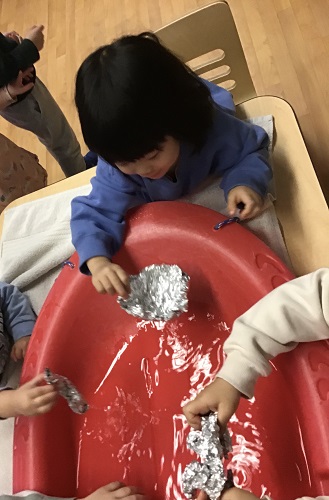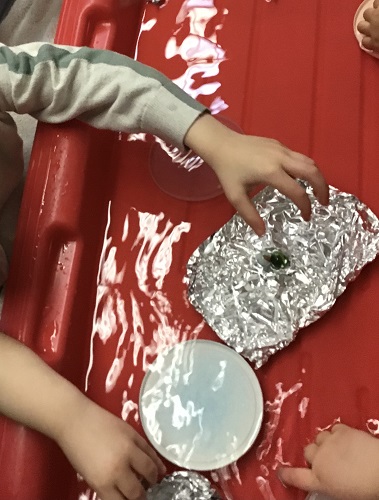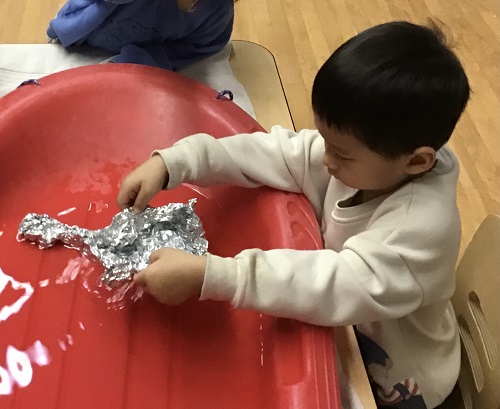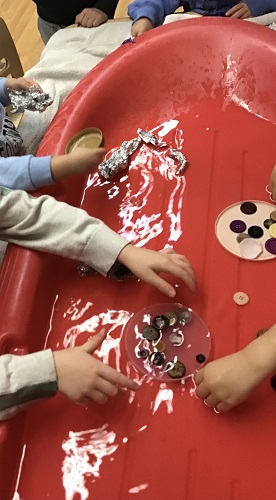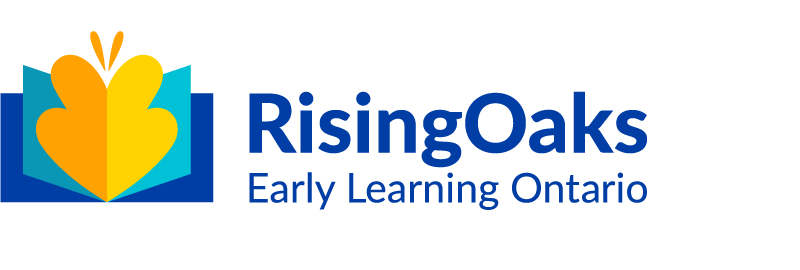On the first day of February the preschoolers experimented with the concept of floating with aluminum foil boats, container covers, and bottle lids. Geumhwa prepared the aluminum foil first before providing them the bottle lids. Geumhwa’s intention was to encourage the children to fold boats by themselves.
Thomas, “I need help.” Geumhwa, “You can make a boat any way you like. You try on your own first.” After several tries, Thomas said, "I made a boat, it’s floating!” while he was putting a marble onto his boat.
They were also given some objects such as buttons and gems to test the capacity of their boats. Arvin said that his boat was sinking, and Geumhwa asked, “Why do you think your boat is sinking?” Blakely answered, “That’s because the stuff is too heavy.” Kayden squeezed the aluminum foil and opened it slowly to make a hull. When he found the water was flowing into it, he picked up and fixed the boat.
Gavin also used a similar strategy to test his boat by repeating the process many times. Miranda shouted with excitement, “Geumhwa, look at my boat!” which she had put a lot of time and effort into making. Geumhwa, “That looks like a perfect boat! Are you ready to put it in the water and see if it floats?” Then, without hesitation Miranda put her boat in the water watching it float. Next, she loaded the buttons onto her boat until the boat sank under the water.
Buareake joined the play later. He put some objects in the cork boat and threw it into the air. He giggled when the boat landed in the water and splashed all over him.
The preschoolers used their creativity and imaginations to make their boats. Through this trial and error experiment, the children’s cognitive development would be fostered by using problem solving skills and testing the scientific concept of buoyancy by putting the different objects on their boats. They also interacted with each other and compared the boats they created. This hands-on experiment would strengthen the children’s hand-eye coordination by combining their visual and fine motor skills to fold their own boats.Science experiments are an excellent way for young children to test their hypothesis and discover the wonders of the world around them. To expand the preschoolers’ curiosity and interests in activities related to water, preschool 1 educators will plan and provide more opportunities to help the children grow scientific thinking.
For the next step, we can explore more about water properties - ice. For example, the concept of density of the ice by asking the question - Why is the ice cube floating in the water? Another science experiment can be to explore the concept of dissolving - Things that dissolve in the water. For which we can provide substances such as salt, sugar, and sand and let the children observe, predict, and make a hypothesis, and test the hypothesis to find out the result like a scientist!
